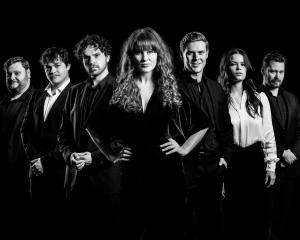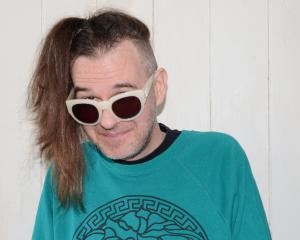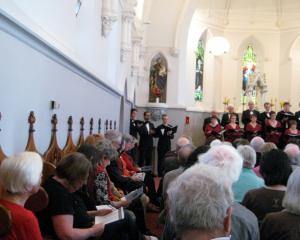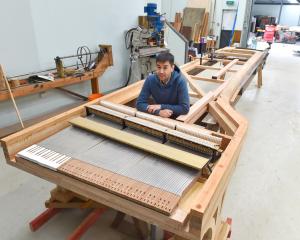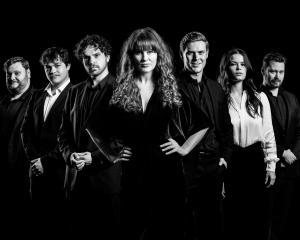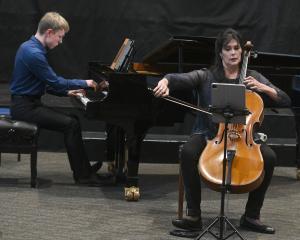The jazz community, however, has been aware of Spalding and her eclectic melange of jazz, soft-edged soul, pop, funk, Brazilian music and world-beat idioms for several years.
Still basking in post-Grammy buzz, she's become an "it girl," whose accessible-yet-sophisticated crossover style, wispy vocals, dark-eyed beauty, five-storey Afro and walking-on-sunshine vibe have merged into a charismatic, made-for-prime-time package.
At 26, Spalding has become the rare contemporary jazz musician to have broken through the force field of popular culture.
Predictably, her success has exacerbated familiar fault lines in the jazz community between purist and populist sensibilities. But reductive labels don't make much sense when it comes to Spalding. The Duke Ellington maxim that there are only two kinds of music, good and bad, is a more viable prism, even as reasonable people might disagree on what kind she's making at any particular point.
Still, she doesn't mind being at the centre of a debate.
"It's good to have a dialogue about our field," Spalding says.
"Whether or not my music is considered jazz, I think my music is sincere. I love my music and am proud and happy to share it. I think jazz is so deeply instilled in my blood that it is a really big part of my music. Some people would say my music is real jazz, and some people would say it's too diluted to be the real thing. But that's a good thing. At least people are listening and talking."
Spalding, who grew up in a single-parent home, discovered her calling aged 4 after seeing cellist Yo-Yo Ma on television. She took up the violin and before long joined a community orchestra.
Aged about 14, she picked up the bass, falling in love not only with the instrument but also the possibilities. She started playing blues, funk, jazz, hip-hop and pop and writing and singing her own songs.
She sped through studies at the Berklee College of Music in Boston, becoming an instructor at the school at age 20. In school, she ended up in a small ensemble class led by veteran tenor saxophonist Joe Lovano, one of the leading figures in jazz, with whom she still works and records. Lovano's spontaneous aesthetic creates a challenging environment for his sidemen, but Spalding was a natural.
"She contributed immediately to the flow of the music and contributed ideas melodically within the rhythm section, which is rare for a young player," Lovano said. "She played with ideas and didn't just play off the page."
What was most memorable about Spalding's appearances with Lovano's post-bop quartet - aside from the fact that her thin frame practically disappeared behind her bass - was the bell-like clarity of her sound and an intuitive approach to counterpoint that had her dancing with the rest of the group. Her playing was raw but full of promise.
"I've always been confident enough to use my voice openly and freely and trusting that I would hopefully know what to do with other people," she says. "Of course, I'm speaking of myself as a 19-year-old and I was probably missing 90% of what was going on. But at least there was enough openness that we could dance."
In the years since, she has filled in gaps in her musical education, familiarising herself with the landmarks of jazz history, yet keeping her ears open and following her muse. As Lovano put it, "She's living in the world of music in a creative way, absorbing everything around her, and putting ideas together from her natural feelings".
Her own recordings are a potpourri of idioms, ideas, fusions. When she hits on all cylinders, like her up-tempo, 5/4 reinvention of the evergreen Body and Soul that she sings in Spanish, the effect is exhilarating. The version appears on Esperanza, the second of her three CDs as a leader.
Also on Esperanza is the high-energy She Got to You, one of Spalding's best original compositions, which comes on like a radiant funky samba with a suite-like structure, a strong bass line and some catchy melodic hooks that wink at Stevie Wonder.
The lyrics are wordy and not very deep, but Spalding's voice ricochets between the registers and rhythms with improvisatory glee.
On the other hand, her melodies and lyrics can turn overly precious, aiming for profundity but not making it much past pap.
Her latest CD, Chamber Music Society, an ambitious album co-produced by Spalding and Gil Goldstein that uses a small string section as a linking device , sometimes feels like a tennis match, with moments of brilliantly inspired orchestration, improvisation and scat singing volleying with polished, middle-brow Muzak.
Despite the range of her stylistic references, however, the jazz language remains embedded in the DNA of all of Spalding's music.
"I deeply, deeply identify with the mode of expression, which is improvisation, that form of communal expression," she says.
"You don't have to know everything to make beautiful music, even in jazz. What people are listening for in improvised music is the beauty of your story-telling, the way that you as an individual put those elements together.
"The point is, I'm studying and working and it's going to evolve and people will like it or won't, but I'm going to keep doing it."
"Since I'm so loudly associated with jazz, it might be interesting for some people to realise that the genre is encompassing a lot more than some old stereotypes. My friend who works at a School of Rock in Minneapolis said the kids weren't aware who any of the artists in my category were except for, I think, Justin Bieber, so when I won and they went online, they said, `Oh, we didn't know that happens in jazz'.
"I think what they meant was that whatever their archaic stereotype of what jazz was, I didn't align with it. Of course, there is a lot more going on than just me and archaic stereotypes, but the point is, people can hopefully be drawn to what else is happening in the idiom."

